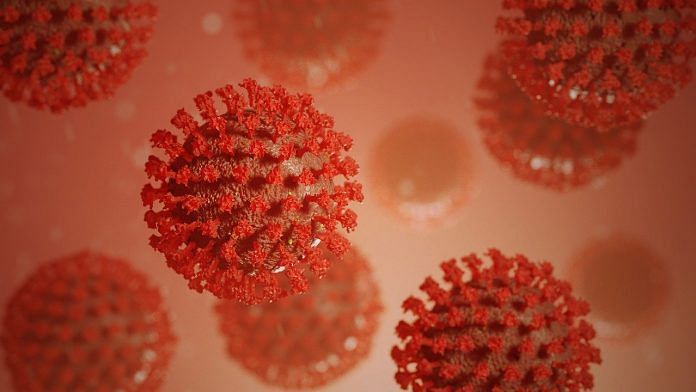New Delhi: Scientists from Homi Bhabha National Institute in Mumbai have created a new computational tool that can determine the origin of the new variants of SARS-CoV-2.
This new tool can help researchers across the world keep a lookout for emerging mutations of concern.
In a study, published in the Briefings in Bioinformatics journal, the team described how the tool, called Infectious Pathogen Detector (IPD), can be used to perform integrated analysis of diverse genomic datasets.
The tool is freely available online for researchers to generate an automated report on SARS-CoV-2 genome sequences without any prior computational know-how.
The tool was originally developed to understand pathogens associated with the cancer genome, noted Amit Dutt, corresponding author of the study.
“There is a methodology known as computational subtraction. This involves genome sequencing of tumour samples and then computationally removing everything that matches the human reference genome,” Dutt told ThePrint.
“Whatever is left behind, we look at those to identify what these might be,” he said. This helps determine what role pathogens play in cancer.
Also read: Covaxin shows 81% interim efficacy in preventing Covid, Bharat Biotech says
Tool gives info on abundance, mutations and lineage
In July last year, the team decided to add the SARS-CoV-2 module to this computational tool.
“We took sets of samples — one which was prior to the pandemic and another when the pandemic began,” Dutt said.
He added: “We tried to look for if there have been any occurrence of the SARS-CoV-2 genome sequence in tumour samples before the outbreak of SARS-CoV-2 was announced.”
This helped confirm that the SARS-CoV-2 really was a novel genome sequence that did not exist earlier.
For every individual sample, the tool generates an automated report that gives information on three parameters — abundance, mutations and lineage.
“It tells you the abundance of the SARS-CoV-2 sequences in your sample, which would correspond to the viral load in the individual,” Dutt said.
The tool also compares the sequence in the sample to the initial sequence from Wuhan as a reference, to identify the mutations.
“Overtime, you can collect samples from different months and the automated system can tell which mutations have accumulated over time,” Dutt said.
Then the system also infers the phylogenetic clade, that is, the lineage of the SARS-CoV-2 samples. Lineage describes a series of mutations over time that help the scientist trace when and where a new variant evolved.
This tool automates the analysis of SARS-CoV-2 genome sequences from across the globe.
Also read: Why Delhi hospitals, with 100s of vacant beds, are still struggling to cater to all patients






